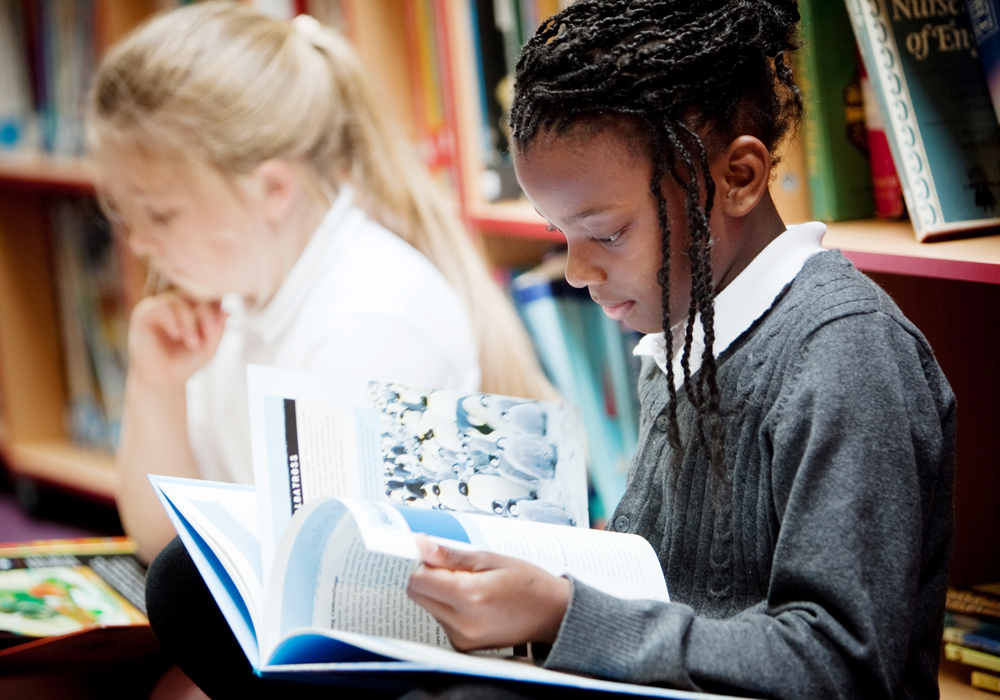"Phonics outcomes are strong. This gives pupils an excellent start as readers." Ofsted
How we teach reading
Validated by the Department for Education, we use ALS Phonics: Letters and Sounds to provide a solid and continuous approach to the teaching of a systematic synthetic phonics (SSP) programme in Nursery, Reception and KS1.
Based on the principles of Letters and Sounds, it offers training, guidance and resources to support schools in the delivery of a successful and complete SSP programme.
Tried and tested teaching sequences and mantras are used daily to ensure children have a clear structure to their learning, developing their ability and confidence to decode successfully, building towards becoming independent readers.
As noted by the DfE, a strength of the ALS Phonics programme is the guidance provided for supporting the lowest 20% of pupils and the training provision.
Phonics are the sounds that letters make and learning them helps children to decode words and begin to read and write.
Phase 1
This paves the way for systematic learning of phonics and usually starts in nursery or playgroup.
Teachers plan activities that will help children to listen attentively to sounds around them, such as the sounds of their toys and to sounds in spoken language. Teachers teach a wide range of nursery rhymes and songs. They read good books to and with the children. This helps to increase the number of words they know – their vocabulary – and helps them talk confidently about books.
Ways you can support your child at home
Play ‘What do we have in here?’ Put some toys or objects in a bag and pull one out at a time. Emphasise the first sound of the name of the toy or object by repeating it, for example, ‘c c c c – car’, ‘b b b b – box’, ‘ch ch ch ch – chip’.
Say: ‘A tall tin of tomatoes!’ ‘Tommy, the ticklish teddy!’ ‘A lovely little lemon!’ This is called alliteration. Use names, for example, ‘Gurpreet gets the giggles’, ‘Milo makes music’, ‘Naheema’s nose’.
Teach them ‘Peter Piper picked a peck of pickled peppers’.
Learning how to ‘sound-talk’
The teacher shows children how to do this – c-a-t = cat. The separate sounds (phonemes) are spoken aloud, in order, all through the word, and are then merged together into the whole word. The merging together is called blending and is a vital skill for reading.
Children will also learn to do this the other way around – cat = c-a-t. The whole word is spoken aloud and then broken up into its sounds (phonemes) in order, all through the word. This is called segmenting and is a vital skill for spelling.
This is all oral (spoken). Your child will not be expected to match the letter to the sound at this stage. The emphasis is on helping children to hear the separate sounds in words and to create spoken sounds.
Ways you can support your child at home:
Sound-talking
Find real objects around your home that have three phonemes (sounds) and practise ‘sound talk’. First, just let them listen, then see if they will join in, for example, saying:
‘I spy a p-e-g – peg.’
‘I spy a c-u-p – cup.’
‘Where’s your other s-o-ck – sock?’
‘Simon says – put your hands on your h-ea-d.’
‘Simon says – touch your ch-i-n.’
‘Simon says – pick up your b-a-g.’
Phase 2
In this phase children will continue practising what they have learned from phase 1, including ‘sound-talk’. They will also be taught the phonemes (sounds) for a number of letters (graphemes), which phoneme is represented by which grapheme and that a phoneme can be represented by more than one letter, for example, /ll/ as in b-e-ll. They may be using pictures or hand movements to help them remember these.
VC and CVC words
C and V are abbreviations for ‘consonant’ and ‘vowel’. VC words are words consisting of a vowel then a consonant (e.g. am, at, it) and CVC words are words consisting of a consonant then a vowel then a consonant (e.g. cat, rug, sun). Words such as tick and bell also count as CVC words – although they have four letters, they have only three sounds. For example, in the word bell, b = consonant, e = vowel, ll = consonant.
Now the children will be seeing letters and words, as well as hearing them. They will be shown how to make whole words by pushing magnetic or wooden letters together to form little words, reading little words on the interactive whiteboard and breaking up words into individual sounds, which will help their spelling. These will be simple words made up of two phonemes, for example, am, at, it, or three phonemes, for example, cat, rug, sun, tick, bell.
Tricky words
They will also learn several tricky words: the, to, I, go, no.
Children will still be practising oral blending and segmenting skills daily. They need plenty of practice at doing this.
Saying the sounds
Your child will be taught how to pronounce the sounds (phonemes) correctly to make blending easier.
Sounds should be sustained where possible (e.g. sss, fff, mmm) and, where this is not possible, ‘uh’ sounds after consonants should be reduced as far as possible (e.g. try to avoid saying ‘buh’, ‘cuh’). Teachers help children to look at different letters and say the right sounds for them.
Ways you can support your child at home:
Magnetic letters
Buy magnetic letters for your fridge, or for use with a tin tray. Find out which letters have been taught – have fun finding these with your child and place them on the magnetic surface.
Making little words together
Make little words together, for example, it, up, am, and, top, dig, run, met, pick. As you select the letters, say them aloud: ‘a-m – am’, ‘m-e-t – met’.
Breaking words up
Now do it the other way around: read the word, break the word up and move the letters away, saying: ‘met – m-e-t’.
Both these activities help children to see that reading and spelling are reversible processes.
Don’t forget the writing box!
Spelling is harder than reading words – praise, don’t criticise. Little whiteboards and pens, and magic boards, are a good way for children to try out spellings and practise their handwriting.
Your child might be trying to use letters from their name to write; this shows that they know that writing needs real alphabet letters.
Make or buy an alphabet poster.
Getting ready for writing
Teachers will model how to form letters (graphemes) correctly, so that children can eventually acquire a fluent and legible handwriting style. These skills develop over a long period of time. A child’s ability to form a letter correctly is a separate skill from phonics. Holding a pen or pencil needs considerable co-ordination and practice in making small movements with hands and fingers.
In the early phonic phases children can use letter cards or magnetic letters to demonstrate their knowledge of phonics.
Writing in lower-case letters
We shall be teaching lower-case letters, as well as capital letters. As most writing will be in lower-case letters it is useful if you can use these at home. A good start is for your child to write their name correctly, starting with a capital letter followed by lower-case letters.
Your child’s teacher can advise on the handwriting style that is taught and how you can help at home.
Ways you can support your child at home:
Using their whole body
For handwriting children need to be well co-ordinated through their whole body, not just their hands and fingers. Games that help co-ordination include throwing balls at a target, under-arm and over-arm, and bouncing balls – also skipping on the spot, throwing a Frisbee, picking up pebbles from the beach and throwing them into the sea. Have fun!
Hand and finger play
Action rhymes such as ‘Incy wincy spider’, ‘One potato, two potato’ and ‘Tommy Thumb’ are great fun and get their hands and fingers moving. Playing with salt dough or clay really helps strengthen little fingers, as does cookery and using simple toolkits.
Hand–eye co-ordination
Pouring water into jugs and cups of different sizes, sweeping up with a dustpan and brush, cutting, sticking, tracing, threading beads, completing puzzles, peeling off stickers and sticking them in the right place – these all help hand–eye co-ordination.
Pencil hold
The ‘pincer’ movement needs to be practised. This is important as it enables children to hold a pencil properly as they write. Provide them with kitchen tongs and see if they can pick up small objects. Move on to challenging them to pick up smaller things, for example, little cubes, sugar lumps, dried peas, lentils, first with chopsticks, then with tweezers.
Ask children to peg objects to a washing line.
Provide plenty or different types of pen and pencil; hold their hand to practise the correct grip.
Phase 3
The purpose of this phase is to:
- teach more graphemes, most of which are made of two letters, for example, ‘oa’ as in boat
- practise blending and segmenting a wider set of CVC words, for example, fizz, chip, sheep, light
- learn all letter names and begin to form them correctly
- read more tricky words and begin to spell some of them
- read and write words in phrases and sentences.
CVC words containing graphemes made of two or more letters
Here are some examples of words your children will be reading: tail, week, right, soap, food, park, burn, cord, town, soil
Their confidence from the daily experience of practising and applying their phonic knowledge to reading and writing is really paying off!
Tricky words
The number of tricky words is growing. These are so important for reading and spelling: he, she, we, me, be, was, my, you, her, they, all.
Ways you can support your child at home
- Sing an alphabet song together.
- Play ‘I spy’, using letter names as well as sounds.
- Continue to play with magnetic letters, using some of the two grapheme (letter) combinations:
r-ai-n = rain blending for reading rain = r-ai-n – segmenting for spelling
b-oa-t = boat blending for reading boat = b-oa-t – segmenting for spelling
h-ur-t = hurt blending for reading hurt = h-ur-t – segmenting for spelling
- Praise your child for trying out words.
- Ask teachers for a list of the tricky words.
- Set a timer. Call out one word at a time and get your child to spell it on a magic board or a small whiteboard, against the timer – remember, they can use magnetic letters.
- Play ‘Pairs’, turning over two words at a time trying to find a matching pair. This is especially helpful with the tricky words: the the, to to, no no, go go, I I
- Don’t worry if they get some wrong! These are hard to remember – they need plenty of practice.
Phase 4
Children continue to practise previously learned graphemes and phonemes and learn how to read and write:
CVCC words: tent, damp, toast, chimp
For example, in the word ‘toast’, t = consonant, oa = vowel, s = consonant, t = consonant.
and CCVC words: swim, plum, sport, cream, spoon
For example, in the word ‘cream’, c = consonant, r = consonant, ea = vowel, m = consonant.
They will be learning more tricky words and continuing to read and write sentences together.
Tricky words
said, so, do, have, like, some, come, were, there, little, one, when, out, what
Ways you can support your child at home
- Practise reading and spelling some CVCC and CCVC words but continue to play around with CVC words. Children like reading and spelling words that they have previously worked with, as this makes them feel successful.
- Make up captions and phrases for your child to read and write, for example, a silver star, clear the pond, crunch crisps. Write some simple sentences and leave them around the house for your child to find and read. After they have found and read three, give them a treat!
- Look out for words in the environment, such as on food packaging, which your child will find easy to read, for example, lunch, fresh milk, drink, fish and chips, jam.
- Work on reading words together, for example, a street name such as Park Road, captions on buses and lorries, street signs such as bus stop.
A Story-telling School
Story structure reflects the way the human brain makes sense of the world. Understanding the core structure of stories helps children not only in reading and writing, but in all other areas of the curriculum and in personal communication.



